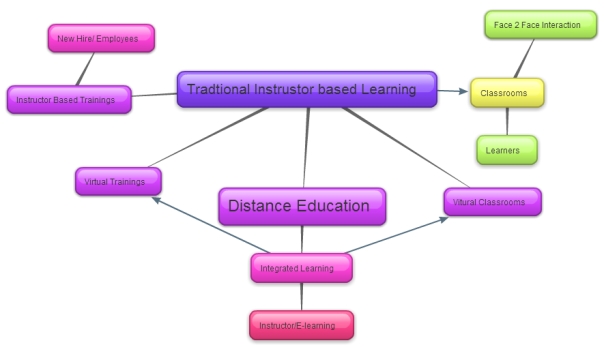Selecting Distance Learning Technologies
In these 3 weeks of our course on distance learning, I have had the opportunity to come across different resources about distance learning and different concepts involved. This week in discussing the use of distance learning technologies, we have learned about CMS’s ( course management systems) or LMS’s (learning management systems). These systems offer tools that allow educational resource management that includes administrative functions, assessments, and grading. There are the Web 2.0 applications that now provide the instructor and learner access to more technological tools to provide a more useful toolbox of web resources to connect the learner with their educational needs.
Focusing on the concept of the Equivalency Theory, it is said that this is the direction of distance learning. Making a virtual classroom as effective as the traditional classroom.
“ The impact of new telecommunications technologies on distance education is far-reaching. Real-time television systems, such as the Iowa Communications Network (Simonson and Schlosser 1995), permit learners and instructors to see and be seen, and be heard, in almost the same way as in the local classroom. Keegan (1995) suggested that electronically linking instructor and students at various locations creates a virtual classroom” (Simonson, Schlosser, Hanson, 1999).
The use of these technological tools have moved beyond the classrooms of educational institutions and emerged in the corporate world. Organizations are utilizing such technologies to provide employees with training resources, including live seminars also called “ Webinars”. Companies are able to create, conduct and distribute training and resources to employees cost effectively.
Employers like educators have variety of technological tools available to fit any training or educational need like the collaborative training example below:
A new automated staff information system was recently purchased by a major corporation and needs to be implemented in six regional offices. Unfortunately, the staff is located throughout all the different offices and cannot meet at the same time or in the same location. As an instructional designer for the corporation, you have been charged with implementing a training workshop for these offices. As part of the training, you were advised how imperative it is that the staff members share information, in the form of screen captures and documents, and participate in ongoing collaboration.
One of the first distance learning tools that come to mind is one that I am particularly familiar with and also have found it pretty easy-to-use is the program Anymeeting.
This is a web-based software that can be accessed through a web browser. It does not require the trainer or trainee specific technological hardware or downloads in order to use it. It does require users to have internet access and ensure is up to date and compatible with the most recent version.
Learners do not have to be in the same office or geographic location to participate. With Anymeeting employees can be invited to register and view training sessions, meetings and presentations with the click of a link that can be sent via email.
“The idea of appropriate application implies that learning experiences suitable to the needs of the individual learner and the learning situation should be available and that the availability of learning experiences should be proper and timely. In other words, learning experiences that are made available to either distant or local learners should allow delivery of instructional ideas that fit the expectations and facilities available to them; desktop video conferencing should not be expected of learners accessing Web-based information by modem. Similarly, collaborative learning strategies are not appropriate when an individual learner is isolated unless an equivalent, technology-based collaboration is arranged” (Simonson, Schlosser, Hanson, 1999).
Distance learning requires a skill level of communication amongst learners. Effective technological tools should allow for different forms of resources and supporting tools to be shared amongst the learners. With Anymeeting trainees are able to share screens, upload files and documents in real-time allowing each individual to collaborate on projects or simply provide information to benefit other based on the training’s. If one is unavailable a the time of a training or meeting, Anymeeting allows the host and attendees to record the training, is great for referencing later when training information in being updated.
Check out these users that have tried Anymeeting:
http://vellgroup.com/2012/01/test-drive-of-anymeeting/
What we have learned thus far is that the instructional experience itself is necessary for the learning process. We have are also witnessing the evolution of the learning experience as well as the methods and practices. Distance learning combined with today’s technologies is customizing each learning experience for educational institutions and corporation training’s. The use of tools such as this one makes telecommunications possible.
Simonson, M., Schlosser, C., & Hanson, D. (n.d.). Theory And Distance Education: A New Discussion. American Journal of Distance Education, 60-75.
Anymeeting. (2014). Retrieved from http://www.anymeeting.com/Free-Web-Conferencing-Features.aspx
7 Things You Should Know About LMS Alternatives. (2010). Retrieved from
